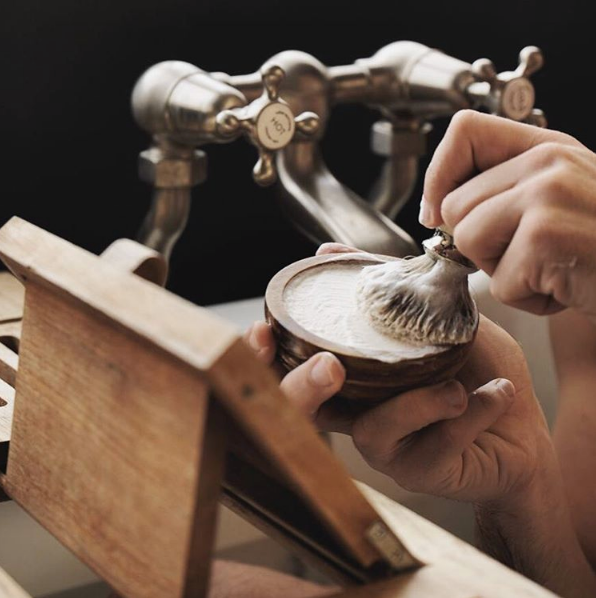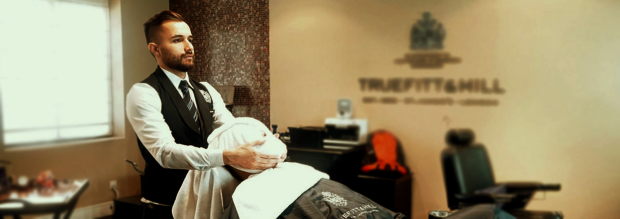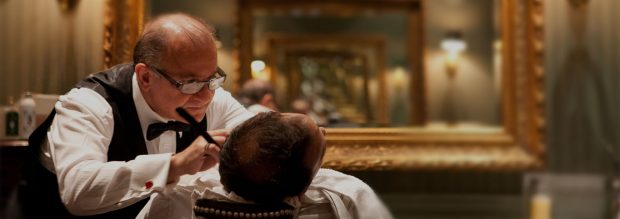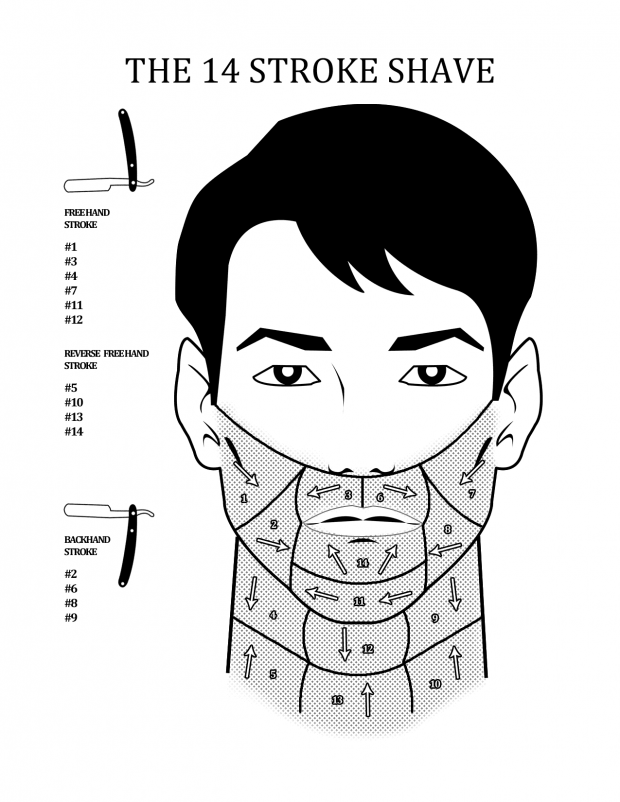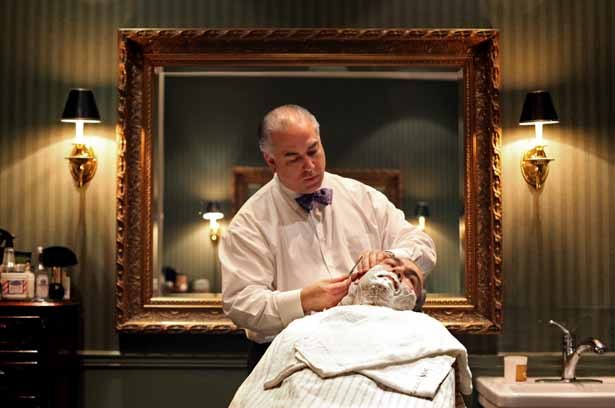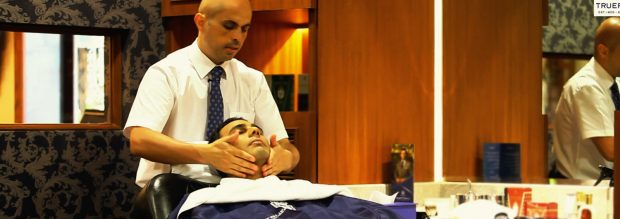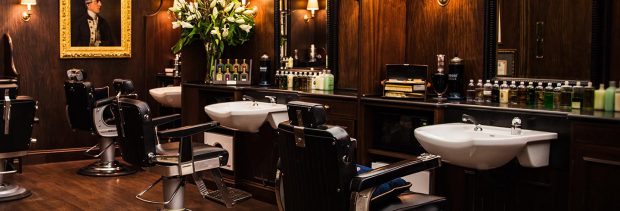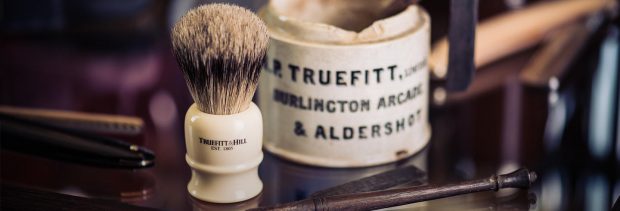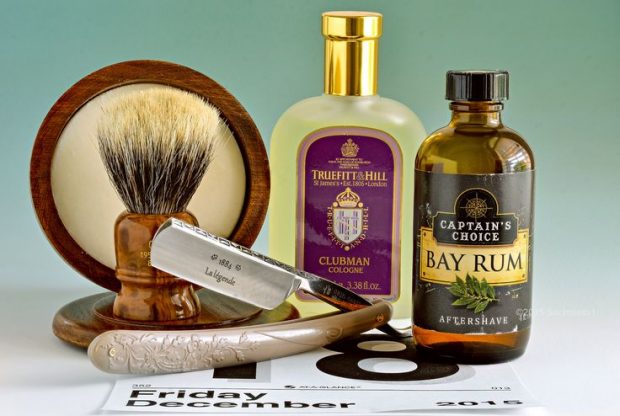Straight Razor Shaving Techniques
It takes some practice, and steady hands are a must, but it’s worth the effort to learn how to shave with a straight razor the way grandpa – or great grandpa – did.
A good razor, strop, and hone don’t come on the cheap. But, once you’ve gotten the right gear, you’ll never have to spend another dime on razors again. It’s an environmentally friendly shaving solution that leaves you with a smooth, baby soft face.
Pre-shave preparation – Stropping and Honing razor blades.
Stropping sets the tiny teeth of the razor edge into perfect alignment. The strop will consist of a canvas strip and a leather strip, with a hook at one end. Attach the hook to a doorknob or bed post and pass the blade up the canvas surface of the strop with light pressure, keeping the blade flat and leading with the spine.
When you reach the end of the strop, flip the blade over and then run it back down. Twenty times with the canvas side and another 20 with the leather is a good rule of thumb. If you strop it properly every time you shave, you should only have to hone it about every 6 to 8 weeks.
Aside from actually laying a sharp blade against your face, honing the razor is easily the most intimidating aspect of learning how to shave with a straight razor.
With the entire blade, including the spine and edge, perfectly flat against the hone, sharpen by passing the blade sideways from the heel to the point over the hone, leading with the sharp edge. For a well maintained razor, about 8 to 10 strokes should do it.
Pre-shave preparation — Shave oils and creams.
After you’ve made sure the razor is cut-throat sharp, the next step is to prep your face for the harsh procedure it will be subjected to. Using a hot towel directly on your face works best to soften the skin and hair, which allows the razor to glide easily. Alternatively, shaving right after a hot shower works equally well.
For a truly rewarding experience, apply a pre-shave oil or cream to further moisturize and soften the hair. This helps reduce a lot of the irritation commonly experienced by many after shaving. The whole process can be a bit time consuming, but practice makes perfect in your straight razor shaving routine.
Next, lather up using shaving cream and a premium shaving brush — preferably containing badger hair bristles. Besides badger hair, synthetic and boar bristle is also available but badger hair is considered best for lathering.
Lathering directly on your face does not work well. Instead, invest in a quality shaving bowl that will make lathering up very simple. With just a pea-sized amount, you can really work up a rich lather that would provide a smooth shave.
The right straight razor shaving techniques to use.
Holding the razor in your dominant hand, your thumb should stabilize the razor on the underside, with your index, ring, and middle fingers on the top of the shank. Hold the handle with your ring and little finger, resting one of them on the tang (the crescent shaped part). Now on to the shave.
With your free hand, stretch your skin back so it’s taut. Holding the blade at about a 30 degree angle, pass the blade over your face in the direction of hair growth, using light pressure and even strokes.
Once you’ve gone over the whole area once, rinse, lather up again and do it a second time, this time running the razor against the direction of hair growth.
A short video from Truefitt & Hill on straight razor shaving.
Safety during straight razor shaving.
Remember to slow down and focus. This is your moment of zen before the day begins, and it can’t be rushed. As mentioned before, remember to keep yourself wet. A hot shower, or a hot, wet towel wrapped around your face opens up the pores of your skin.
As you shave, make sure that the shaving cream stays wet and add water as needed.
Post-shave treatment with oils and creams.
When you are done, rinse first with warm water to remove all the lather, and then with cool water to close your pores. A good aftershave can help calm the skin.
Rinse the razor in cool water and dab it dry with a soft cloth. Apply a drop or two of machine or other oil once a week to keep the blade from rusting.
Avoiding nicks and cuts when shaving with a straight razor.
As a beginner, you will cut yourself. That’s a given. The best way to avoid them is to keep your razor properly maintained. For small nicks and cuts, an alum block is your first choice.
An alum block is a stone that is something like a crystal. Moisten the alum block with cold water and rub it gently over the area. It can act as a general antiseptic and aids razor burn as well as helping to stop bleeding. It will leave your skin feeling cool and fresh.
Tips for those new to shaving with a straight razor.
Investing in an expensive straight razor right off the bat can be a bit overwhelming. The high cost and routine maintenance (stropping and honing) can easily put off any newbie from taking the plunge.
To curb any second thoughts, there are a number of cheap options available on Amazon for a straight razor. These razors fit straight edge barber razor blades, which are disposable and can be thrown out after each use.
Each single blade fits into a slot on the razor and locks into place. Once you’ve completed your shave, you simply remove the blade and toss it out — very similar to what your barber would use. This is by far the most cost effective option for those just starting out with straight razor shaving.
Once you get your feet (read: face) wet, investing in higher quality accessories will only serve to improve the overall shaving experience.
Invest in the best straight razor shaving gear you can afford.
The difference between a good and substandard quality razor lies largely in the steel. Taylor of Old Bond Street manufactures a highly recommended line of shaving products, including shaving cream. Other quality brands include the Dovo and Böker brands from Solingen, along with Thiers-Issard and Trufitt & Hill.
Experiment with different brands and products until you find the right combination for your skin. Although the upfront costs can be high, the benefits far outweigh them. And with high quality products, a little goes a long way, so effectively you won’t be spending all that much.
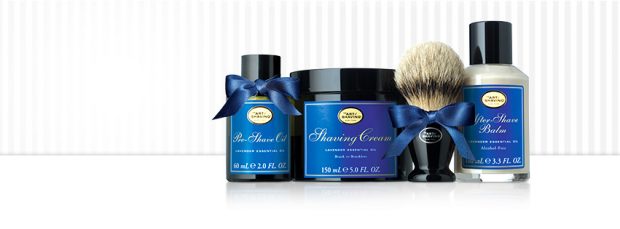
A nice little package consisting of a pre-shave gel, shaving cream, and aftershave balm — from the art of shaving.
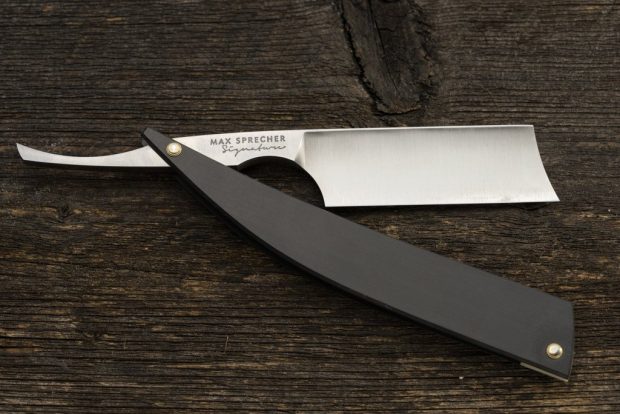
A masterpiece of craftsmanship from Ezra Arthur.
Photo credits: Truefitt & Hill // Ezra Arthur // The Art Of Shaving

